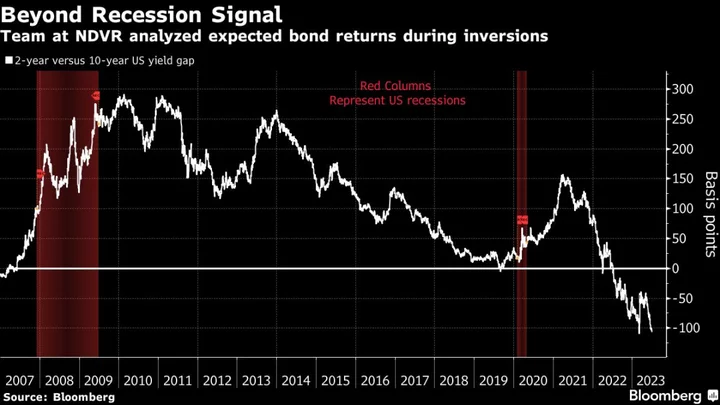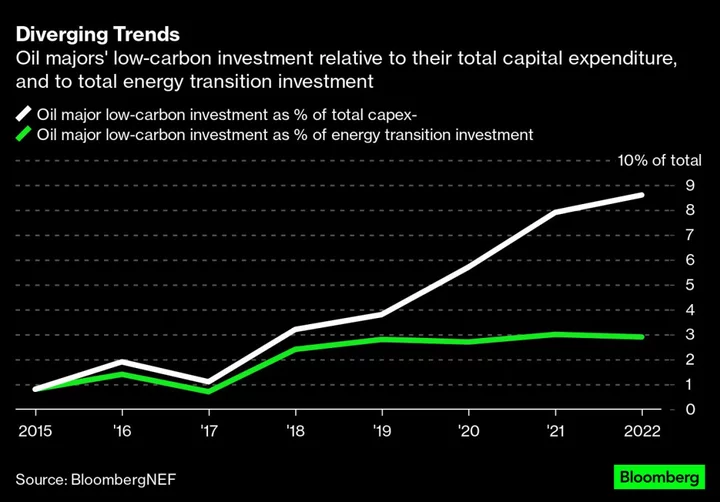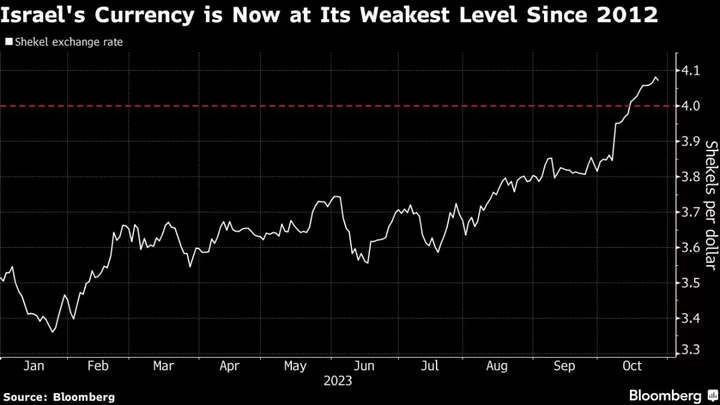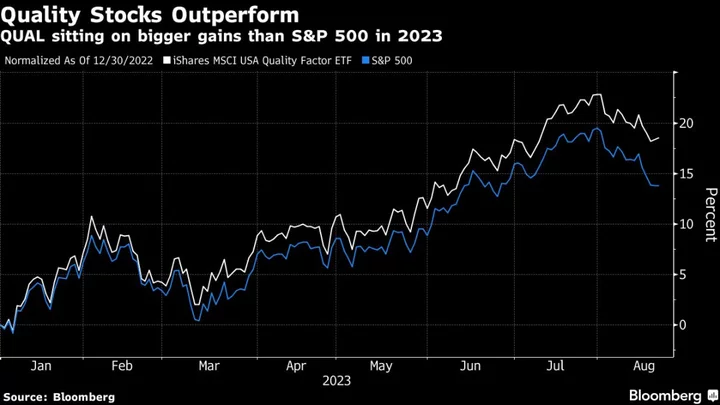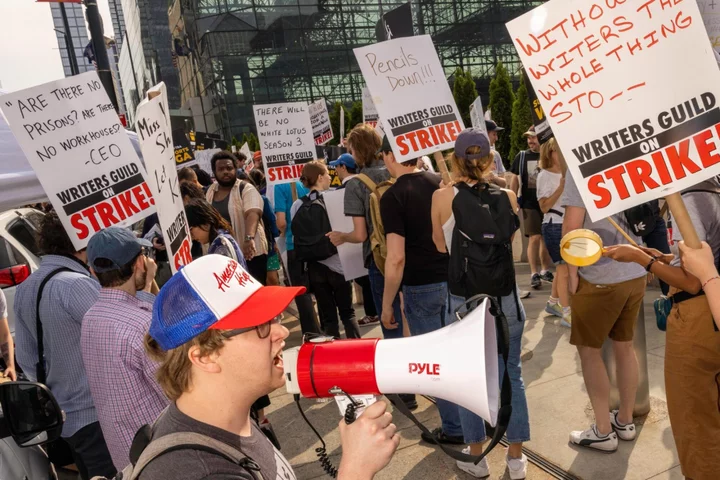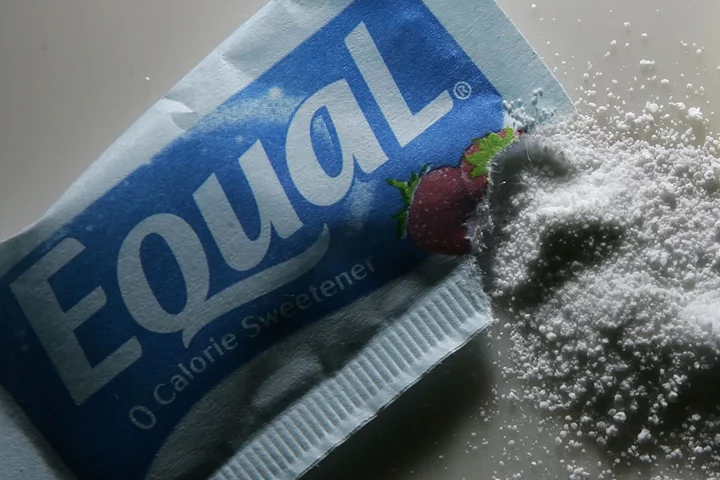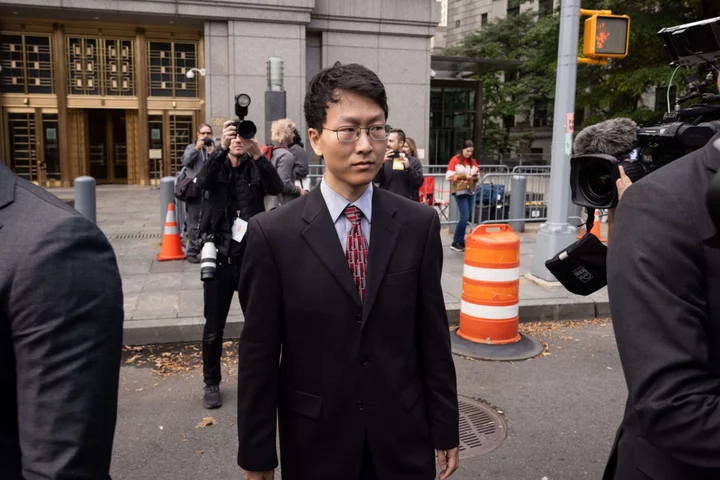Worried that the dreaded inversion of the Treasury yield curve will lay out traps for your bond portfolio in the coming months? Perhaps worry less.
So say quant researchers at Boston-based NDVR after slicing and dicing around 100 years of history in the world’s largest debt market.
The research by Stephanie Lo and Roni Israelov hones in on the very moment that the Treasury market goes topsy turvy — when short-term yields trade higher than longer-maturity counterparts — and then back to normal. Their conclusion: Falling short-dated interest rates, rather than rising 10-year yields, have caused the Treasury market to return to normalcy about 80% of the time.
After a key segment of the US bond market recently hit its most inverted level since the early 1980s, the study provides succor to those Wall Street traders worried that a plunge in 10-year securities will restore order to the US curve. That’s if, for example, inflation stays high and the Federal Reserve keeps its benchmark rate at lofty levels for a sustained period.
Historically speaking at least, after the market turns upside down, one year later excess returns on 10-year Treasuries are still typically positive albeit lower than in regular times.
“Those who are considering investing in 10-year bonds are concerned about the curve normalization occurring from 10-year yields rising – triggering losses in their bond portfolios,” said Israelov, a former principal at AQR Capital Management, in a telephone interview. “What was most striking in our analysis of the historical data was how little actually tended to happen in the 10-year yield during curve normalization.”
Read more: Bond Vigilantes Awaken as Inflation Becomes Embedded: MacroScope
In the aftermath of the Fed’s most aggressive policy tightening in decades, the spread between key front- and longer-dated securities has traded in negative territory — a traditional warning sign that an economic downturn looms. The two-year note’s yield outpaces the 10-year rate by around 89 basis points, with the gap tightening in recent sessions after gaping out to 111 basis points earlier in July.
Several Wall Street firms are predicting that the US curve will begin to normalize in the coming months, even as the Fed signals two more rate hikes may be coming. Subadra Rajappa, head of US interest-rate strategy at Societe Generale SA, reckons that the gap between two- and 10-year yields will end 2023 at about 25 basis points, thanks to moderating inflation.
George Goncalves, head of US macro strategy at MUFG, shares similar conclusions as the team at NVDR. Citing previous market cycles as a trading lens, a slide in short-term rates — as the Fed eases monetary policy — seems more likely than higher rates sparked by the long end rising, in one possible scenario known as a bear steepener.
“Bear steepeners are kind of like unicorns; they are really hard to find,” Goncalves said Thursday on Bloomberg television. “They are very rare. When they happen they are short lived – but they are very painful. So a rise in long-term rates? We haven’t really seen that happen on a consistent basis. So it would have to come from the front end.”
Founder of Yield-Curve Indicator Says Recession Odds Are Rising
The analysis by wealth manager NDVR focuses on the gap between one-month bill rates and 10-year Treasury yields. Their study found that as curves re-steepened, long-term rates rose half the time and fell the rest of the time, each episode by a magnitude of around 90 to 95 basis points. In other words, whether 10-year Treasury yields rose during the normalization is a coinflip. Meanwhile bill yields slid in the majority of cases, on average by around 140 basis points over the year following an inverted curve.
“We saw that most of the action — during the normalization — happened in the front end of the curve,” said Israelov, who also previously worked as a quant at Lehman Brothers.
The NVDR team also dispels fears that investors can only expect to capture positive total returns when curves are upward sloping — a state of affairs that has existed for 90% of the time over the past century.
“While there is a risk premium in bonds during normal times – when the curve is upward sloping — so a positive total future return is expected,” Israelov said. “We still found an expected positive return even when you find yourself with an inverted yield curve, although the returns are much weaker.”
While the likes of Israelov is expecting volatility to endure, there are lots that bond investors will like in the study. Among other findings: The returns data validates the long-standing view that Treasuries have proved a decent hedge when the economy and stocks go south, despite misfiring in the pandemic disruption.
“Treasuries were also shown to be a pretty good diversifier for equities during inversion periods,” Israelov said. “Overall, an inverted yield curve in and of itself is not a strong enough signal that bond returns are going to be negative.”
--With assistance from Lu Wang.

